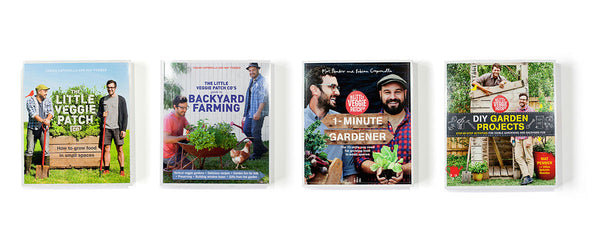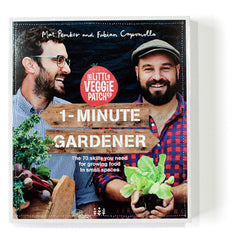No Dig Garden Bed: Top it up!
This is a skill from our best-selling gardening book The One-Minute Gardener, which contains 70 essential skills for edible gardening.
Most raised garden beds will slowly compress over time, especially those with layers of straw/lucerne, which will organically decompose and subside. Topping up a no dig garden bed, or any garden bed for that matter, is an easy and important way to refresh your soil. However, we often struggle to find what seems to be an appropriate time, like when we have nothing growing.
Many of us always have at least a few things growing, but the end of any major growing season will provide the best window for a top up. Remove all of the plants that have reached the end of their lifecycle, anything that has already passed peak productivity or that is looking quite tired. Some perennials and herbs will cope with a transplant, so be sure to water them thoroughly and dig out their whole root ball with a shovel before pulling them from the patch.
With everything out of the patch, you can now begin the top up. Add mushroom compost to patches that just need a slight refresher. If the garden bed has sunk 30cm or more, it's a good idea to add a layer of pea straw before the compost. This will aid soil structure and provide a mix of nitrogen and carbon as it breaks down over the coming years.
Fill the garden bed to the top with mushroom compost and pack it in by stomping and hopping . Kids are great for this job, as many feet will make light work. It's also a great way to wear them out. Scatter a couple of handfuls of organic fertiliser across the garden bed and top with a mix of organic compost and potting mix.
When we add a lot of rich, organic material to our garden beds, it is especially important to top with potting mix. Manure and mushroom compost tend to be a little 'hot', which is to say, not pH balanced. They quickly mellow with time, but by putting a layer of potting mix on top it means that we can confidently plant right away. By time seedling roots reach into the organic material below, it should have 'cooled' off sufficiently.
Finally, return all transplants to the patch. Be sure to water them generously to give them the best chance at survival.
For comprehensive gardening knowledge that is easy to understand, check out our best-selling garden books.
-
Posted in
maintenance, videos

